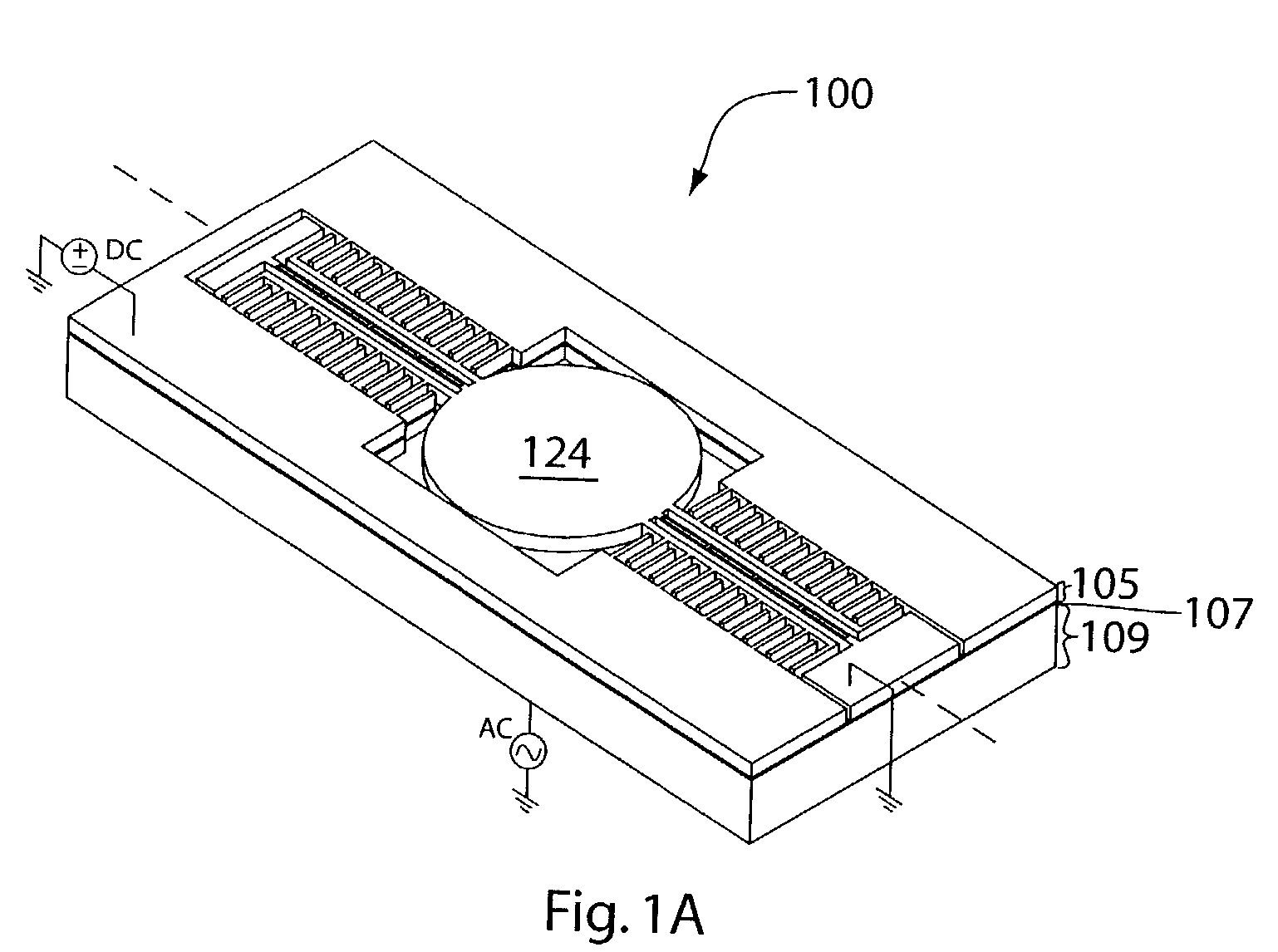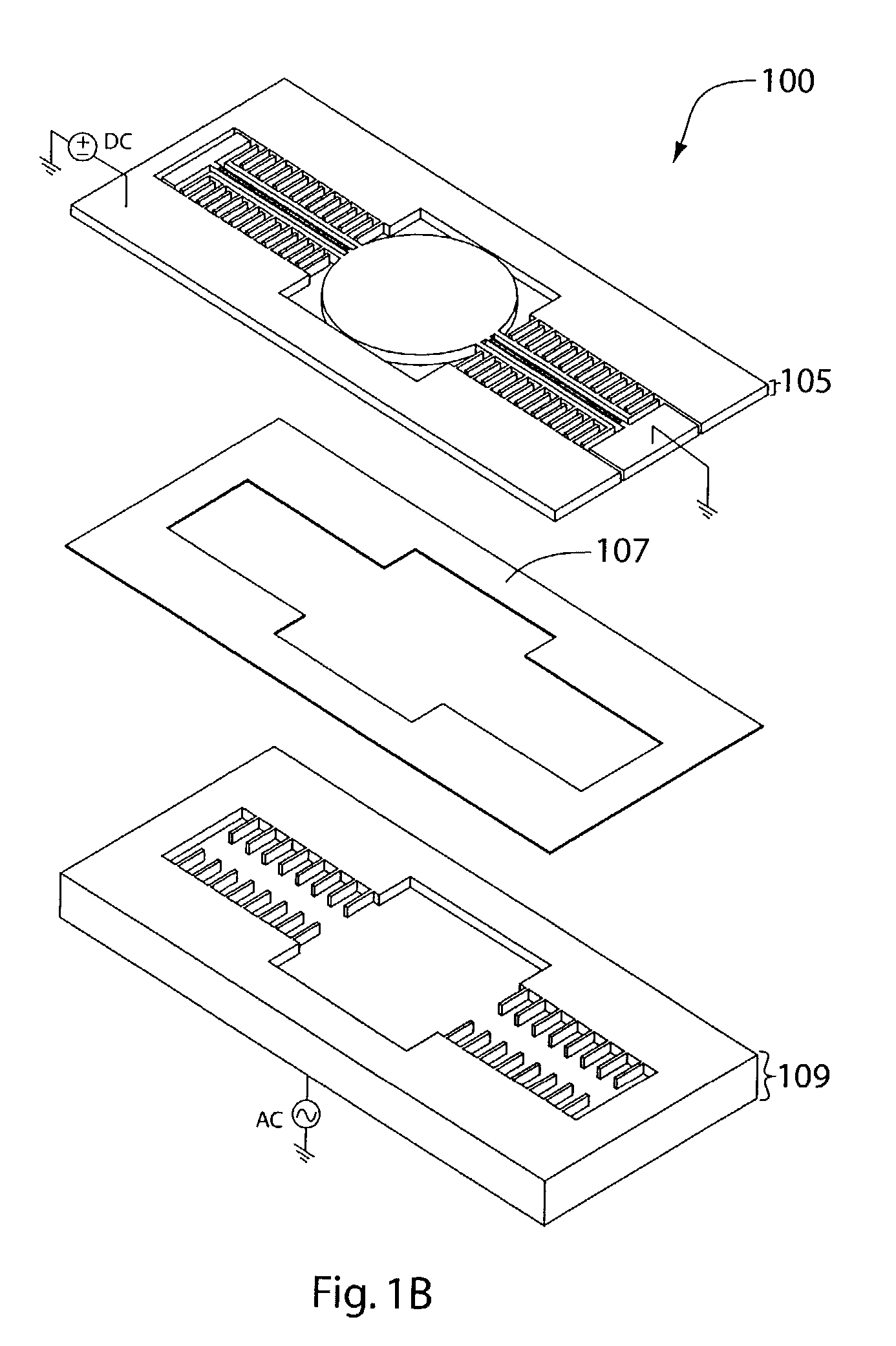MEMS scanning mirror with tunable natural frequency
a scanning mirror and natural frequency technology, applied in the field of microelectromechanical systems, can solve the problem that minority devices do not produce the proper scanning speed
- Summary
- Abstract
- Description
- Claims
- Application Information
AI Technical Summary
Benefits of technology
Problems solved by technology
Method used
Image
Examples
Embodiment Construction
[0014]FIG. 4 illustrates a MEMS system 400 in one embodiment of the invention. MEMS system 400 includes a MEMS structure (e.g., MEMS structure 100, 200, or 300) with a mobile element that is electrostatically moved under voltages supplied by a voltage source 402. Voltage source 402 provides a voltage difference between a stationary electrode and a moving electrode of the mobile element to adjust the natural frequency of MEMS structure 100 to a desired scanning frequency. Voltage source 402 also provides an AC voltage difference between another stationary electrode and the moving electrode of the mobile element at the desired scanning frequency to oscillate the mobile element with a desired scanning angle.
[0015]The movement of the mobile element (e.g., the scanning frequency and the scanning angle) is measured by a sensor 404 and fed back to a controller 406. Controller 406 compares the measured movement to a desired movement of the mobile element and then instructs voltage source 40...
PUM
 Login to View More
Login to View More Abstract
Description
Claims
Application Information
 Login to View More
Login to View More - R&D
- Intellectual Property
- Life Sciences
- Materials
- Tech Scout
- Unparalleled Data Quality
- Higher Quality Content
- 60% Fewer Hallucinations
Browse by: Latest US Patents, China's latest patents, Technical Efficacy Thesaurus, Application Domain, Technology Topic, Popular Technical Reports.
© 2025 PatSnap. All rights reserved.Legal|Privacy policy|Modern Slavery Act Transparency Statement|Sitemap|About US| Contact US: help@patsnap.com



